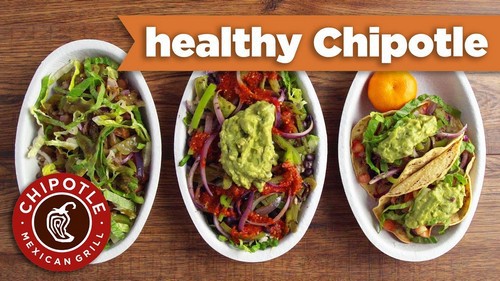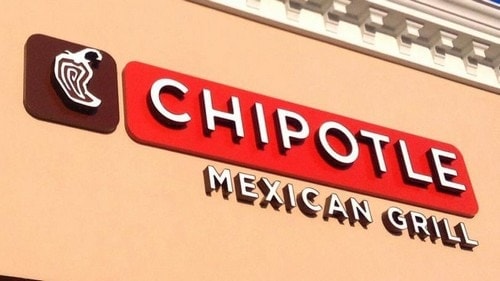The Marketing mix of Chipotle Mexican Grill analyses the 4Ps of Chipotle Mexican Grill, including the Product, Price, Place, and Promotions. Chipotle Mexican Grill is a publicly-traded company of American origins. It is an eating joint for fast-food items and is associated with the Food and Beverage industry. The main USP of this highly acclaimed brand is its use of organic and natural ingredients, most importantly farm-raised meat, in its food products. This restaurant chain was founded in 1993 on July 13 by its founder, Steve Ells. It faces competition from the following rival brands-
- California Tortilla
- Moe’s Southwest Grill
- Baja Fresh
- Panchero’s Mexican Grill
- Qdoba Mexican Grill
- Rubio’s Coastal Grill
- Taco Bell
About Chipotle Mexican Grill
- Type: Fast casual restaurant chain
- Industry: Foodservice
- Founded: July 13, 1993
- Founder: Steve Ells
- Headquarters: Newport Beach, California
- Area served: United States, United Kingdom, Canada, Germany, and France
- Key people: Brian Niccol, Chairman and Chief Executive Officer
- Number of employees: Over 104,958
Table of Contents
Chipotle Mexican Grill Product Strategy
Chipotle Mexican Grill offers Mexican-flavored food items to its customers in a sophisticated style. It has integrated fine dining with fast food restaurants and casual items to provide a different and unique experience. The brand offers a limited menu of only six dishes but with lots of varieties and add-ons.
It has paid particular attention to gaining optimum quality in quick service restaurants, so customers are forced to visit its restaurants repeatedly. Chips, along with dips, soft drinks, and margaritas, are offered along with the dishes. For toddlers, a special kid’s menu is also on hand.
The new Product Mix of Chipotle Mexican Grill in 2023 is as follows (Source).
- Burritos: A signature item, giant, customizable burritos filled with meat (like chicken, beef, barbacoa, carnitas), rice, beans, vegetables, and various toppings.
- Burrito Bowls: This is similar to burritos but served in a bowl without the tortilla. Customers can choose from various ingredients, including meats, rice, beans, and vegetables.
- Tacos: Chipotle offers a choice of soft or crispy tortillas filled with the customer’s selection of meats, rice, beans, and other toppings.
- Salads: For a lighter option, Chipotle provides salad bowls that typically include a lettuce base with meat, beans, salsas, and dressings.
- Quesadillas: Recently added to the menu, quesadillas are a popular choice, customizable with various fillings and served with sides like guacamole, salsa, or sour cream.
- Sides: Chipotle’s sides include chips, guacamole, salsas, and queso. Their chips and guacamole are mainly well-known for their fresh taste.
- Beverages: The options typically include soft drinks, iced tea, and bottled drinks. Some locations also offer beer and margaritas.
- Kids’ Meals: Aimed at younger customers, these meals offer smaller portions and more straightforward options, like cheese quesadillas or small tacos, with sides and a drink.
Chipotle’s product mix focuses on simple, high-quality, customizable options catering to various dietary preferences and needs. The brand emphasizes its ingredients’ freshness and commitment to sustainable and responsible sourcing.
Chipotle Mexican Grill Place Strategy
Chipotle Mexican Grill is an international chain of fast-food joints headquartered in Denver, Colorado, in the United States. Initially, it catered to its customers in the United States. Still, with time, the food company started its international expansion plans to include Paris in France, Frankfurt in Germany, Toronto, Burnaby, Langley in Canada, and London in the United Kingdom. The first restaurant was opened in Denver, Colorado, and by 2017, the company had its outlets in nearly 2,250 locations.
Food can also be ordered from the company’s website, which has a store tracker option to help customers quickly find the stores nearby. The restaurants are classy, with cozy seating arrangements and quick and efficient services. The ingredients are on display, and the customers can watch the dishes being made.
Chipotle does not believe in the franchise system and owns all its outlets. The outlets are managed by efficient staff, which include 64,570 employees by the year 2017. It has a field team that keeps a close watch and works indirectly but closely within its restaurants. It also has a field support team that includes regional directors, team directors, area managers, team leaders, and apprentice team leaders. When the company opens a new outlet, the field team must hire and train a new general manager for the new restaurant. As the chain is corporate-owned, its corporate office handles finding and selecting new locations for new outlets and providing funds for them.
Here’s Chipotle Mexican Grill’s place strategy.
- High-Traffic Urban and Suburban Locations: Chipotle Mexican Grill strategically places its restaurants in high-traffic areas, including urban city centers, busy suburban shopping districts, and college campuses. This ensures high visibility and accessibility to a diverse range of customers.
- Focus on Stand-Alone and End-Cap Locations: Most Chipotle restaurants are stand-alone or end-cap locations in strip malls, offering high visibility and ease of access. This placement strategy helps in attracting both foot traffic and drive-by customers.
- Limited Drive-Thru Service: While traditionally focused on dine-in and walk-in takeout services, Chipotle has begun experimenting with drive-thru lanes, known as ‘Chipotlanes,’ in some locations. These cater to the growing demand for convenience and quick service.
- Online Ordering and Delivery Services: Embracing digital trends, Chipotle has invested heavily in its online ordering system, mobile app, and delivery partnerships. This digital approach allows customers to order easily from anywhere, catering to the increasing preference for home delivery and contactless pickup.
- Selective International Expansion: Beyond its extensive presence in the United States, Chipotle has ventured into a few international markets, such as Canada and Europe. However, the brand adopts a cautious and selective approach to international expansion, focusing on markets with a strong potential for its unique value proposition.
Chipotle Mexican Grill Pricing Strategy
Chipotle Mexican Grill listed its revenues at 3.0 billion US$ and net income of 22.94 billion US$ at the end of the fiscal year 2016. The outlets use organic ingredients of high quality in their dishes, which results in free food prices being a bit higher than those of its rival brands. The dishes are priced per the ingredients used. Optional toppings are free of charge.
The company has adopted a premium pricing policy for its quality dishes. As it has created a high-profile brand name, it does not worry too much about the pricing. Its target audience of customers belongs to the middle and high section of society who can easily afford its prices. These customers are looking for tasty and quality products irrespective of high range.
These high prices lead to more significant profit margins and better revenues. Discounts on several dishes are offered to students to establish a more extensive customer base. The brand is sure of its loyal customers and has maintained its pricing policy, irrespective of stiff competition from competitors in this quick food field.
Chipotle Mexican Grill’s pricing strategy is crucial to its brand identity. It focuses on providing high-quality, fresh ingredients at a value that resonates with health-conscious and quality-focused consumers. Here’s an expert overview of their pricing approach:
- Premium Pricing Strategy: Chipotle employs a premium pricing model compared to traditional fast-food chains, justified by their commitment to using high-quality, often locally sourced and organic ingredients. This pricing reflects the brand’s value proposition of offering healthier, more sustainable fast food options.
- Customization and Upcharge: The brand’s pricing is flexible based on customization. While base prices are set for standard menu items, additional costs are incurred for extras like guacamole or double meat. This strategy allows customers to personalize their meals while Chipotle generates additional revenue from these add-ons.
- Value Proposition through Portion Size: Chipotle offers generous portion sizes, which positions their meals as a good value for the price. This perception of getting more for the money appeals to customers looking for quality and quantity.
- Dynamic Pricing Based on Location: The pricing at Chipotle can vary by location, taking into account local market conditions such as rent, labor costs, and ingredient expenses. This geographical pricing strategy helps maintain profitability in different economic environments.
- Limited Time Offers and Promotions: Occasionally, Chipotle introduces limited-time offers and special promotions to entice new customers and encourage repeat visits. These can include new menu items or special pricing and are used strategically to create buzz and increase foot traffic.
- Loyalty Program and Incentives: Chipotle’s loyalty program, Chipotle Rewards, is another facet of its pricing strategy. Through this program, customers earn points on purchases, leading to rewards like free meals or sides. This system incentivizes customer loyalty and encourages repeat business.
Through these business strategies alone, Chipotle effectively balances the need to cover the costs of high-quality ingredients while offering perceived value to its customers. This approach is central to their position as a leader in the fast-casual dining sector, appealing to a market segment that values both quality and ethical sourcing practices.
Chipotle Mexican Grill Promotion Strategy
Chipotle Mexican Grill has carved a niche for itself in the food industry and, in 2011, was ranked as the best Mexican fast food chain by Consumer Reports. It has an apt tagline, Food with Integrity, which describes its values perfectly. The company has adopted an aggressive marketing and advertising strategy to attract new customers.
It uses every advertising tool at its disposal to garner better brand visibility. Ad campaigns are displayed via newspapers, billboards, television, and radio. Its marketing strategies rely heavily on word-of-mouth publicity as the brand is confident of its high services and quality products.
The official website offers information about its dishes, ingredients, and promotional activities to garner maximum customer interest. For fitness freaks, the website provides nutrition content, too. The brand also takes the help of various social media platforms and portals like Facebook, Instagram, and YouTube. It sponsors teams in events like the International Cycling Union and is an official team partner of the Boston Bruins and Boston Celtics.
The brand also offers discounts to college students, who can show their ID. Chipotle has adopted a below-the-line marketing policy and actively participates in fairs, student events, and concerts. As part of their promotional activities, food trucks are sometimes sent out for serving free items.
Some Recent Video ads and Print ads for Chipotle Mexican Grill are:
Liked this post? Check out the complete series on Marketing Mix

